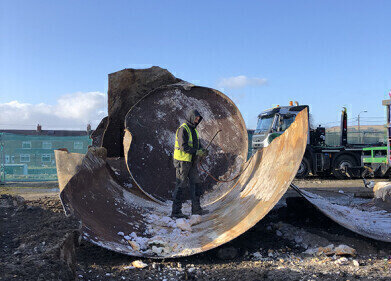Soil remediation
Plant vs TNT – Who Will Win?
Sep 26 2015
Traditionally, explosives such as TNT have been a thorn in the side of plant and animal life across contaminated sites where extensive testing has been undertaken. The toxicity in TNT is damaging to flora and fauna alike and is resistant to degradation by microbes, meaning that it can remain in soil for decades. As such, contaminated land is not arable and remains barren for a significant amount of time.
However, scientists now believe they have discovered exactly why TNT has been so deadly to plant life in the past – and they plant use this information to not only develop a strain of vegetation which can thrive in a contaminated environment, but could actually help to remove the pollutants from the soil itself.
Missing Enzyme the Missing Link
Scientists at the University of York believe they have pinpointed an enzyme in plants which reacts negatively to TNT when it remains in soil. As such, they believe they will be able to generate a strain of plant life which lacks this enzyme and disseminate it in contaminated areas. Since the plant will be able to resist the harmful effects of the TNT, it will suck up polluted components and remove them from the Earth.
“Large areas of land are now contaminated by explosives, and there is a pressing need to find low-cost sustainable solutions to containing these pollutants and ideally removing these pollutants from contaminated areas,” explained Professor Neil Bruce, lead scientist on the study. “Plants have the potential to do this if we can alleviate the toxicity issue.”
If successful, the practice could be a lifesaver to millions of acres of land which are currently desolate as a result of the use of TNT in manufacturing sites, live ammunition training ranges, war zones and mined land. It’s estimated that as much as 24 million acres of US soil is currently barren due to TNT.
Weedy Plant Leads the Way
The breakthrough came when researchers discovered that specimens of the common laboratory plant Arabidopsis thaliana containing the genetic mutation MDHAR6 were able to thrive in TNT-contaminated soil.
The gene itself is normally in charge of converting vitamin C compounds in structures known as mitochondria in order to harvest fuel for the plant to power its cells, develop and grow. However, when TNT was present in the soil, the enzyme reacted abnormally, converting it into an even more toxic compound which limits its growth and damages its cellular structure. Those plants with the mutation did not behave in this manner, thus neutralising the harmful effects of TNT.
Though Arabidopsis thaliana itself is too small and fragile to be used in a large-scale clean-up operation, it’s thought that similar characteristics could be developed in more resilient and hardy species such as switchgrass and introduced within the coming years.
It’s not the first time that bioremediation has been touted as a possible solution to contaminated soil. Fungi has also been suggested as an effective remedial measure for earth that has been polluted by industrial activities in the past and has shown promising results in initial trials.
Events
Mar 18 2025 Expo Santa Fe, Mexico
Mar 18 2025 Moscow, Russia
Mar 19 2025 Manila, Philippines
Mar 20 2025 Guangzhou, China
Mar 24 2025 National Harbour, MD, USA














